Abstract
This study investigated the role of the mast cell in the pulmonary arterial pressor response to hypoxia. We found that pulmonary arteries 50-500 μ in diameter have a predictable distribution of perivascular mast cells; that such pulmonary mast cells are degranulated in vivo during alveolar hypoxia; that hypoxia releases histamine from mast cells isolated from the peritoneal cavity without apparent injury to the cells; and that histamine is released from the lung of intact guinea pigs during alveolar hypoxia, with the rise in pulmonary vascular resistance during this period proportional to the amount of histamine released. These data point to the perivascular pulmonary mast cell in the rat and guinea pig as an important structure in the mediation of the pulmonary pressor response to hypoxia, even though the responsible humoral vasoconstrictor released from such a cell may not be histamine, or histamine alone.
Full text
PDF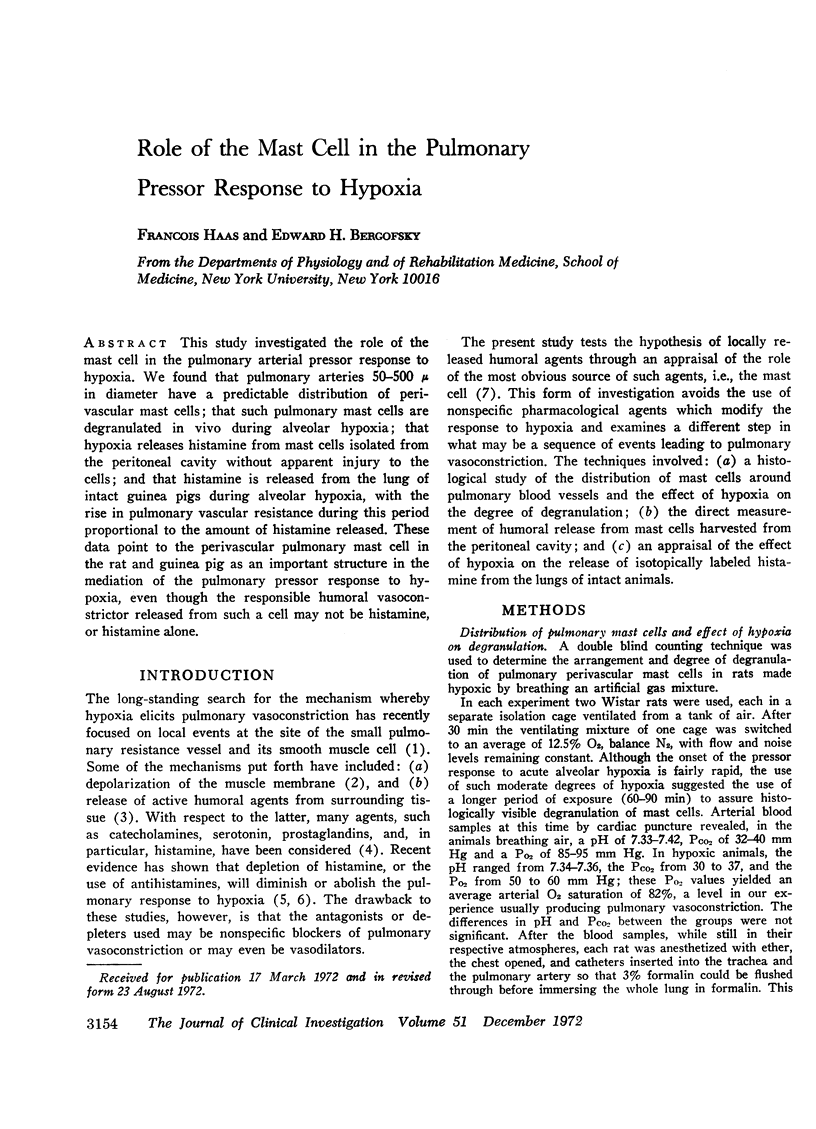
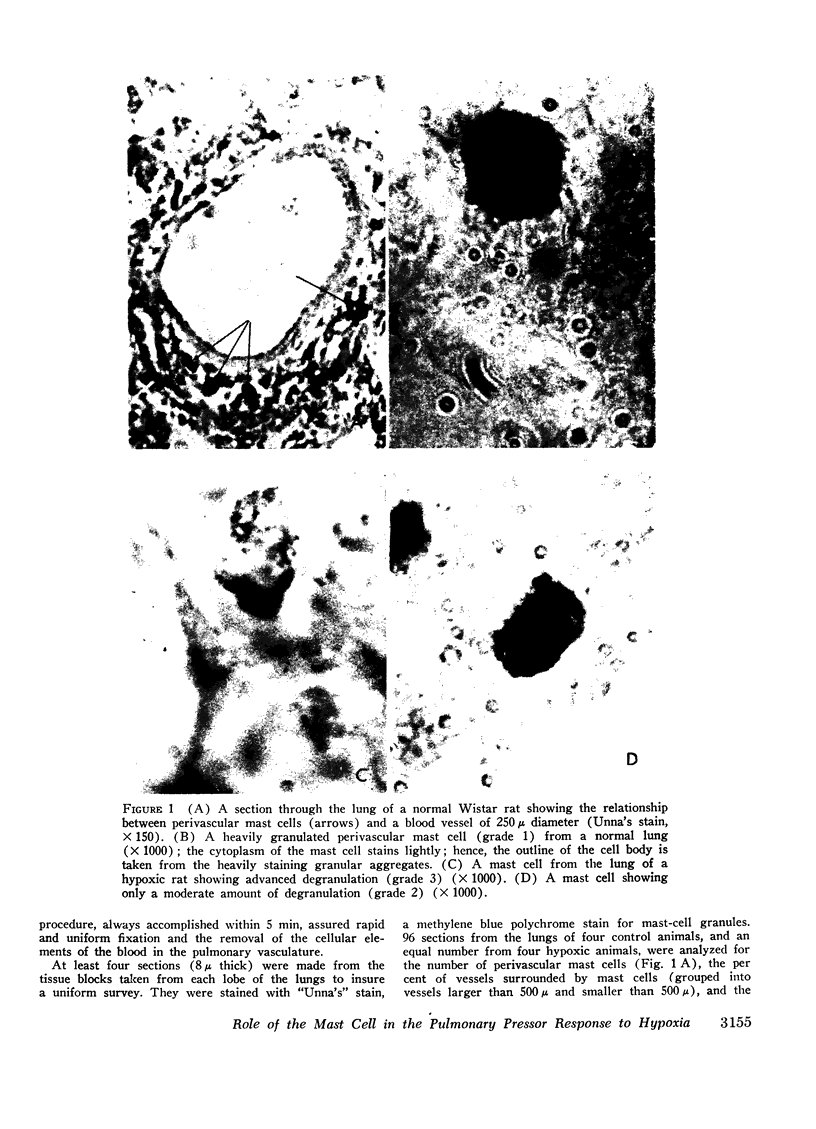
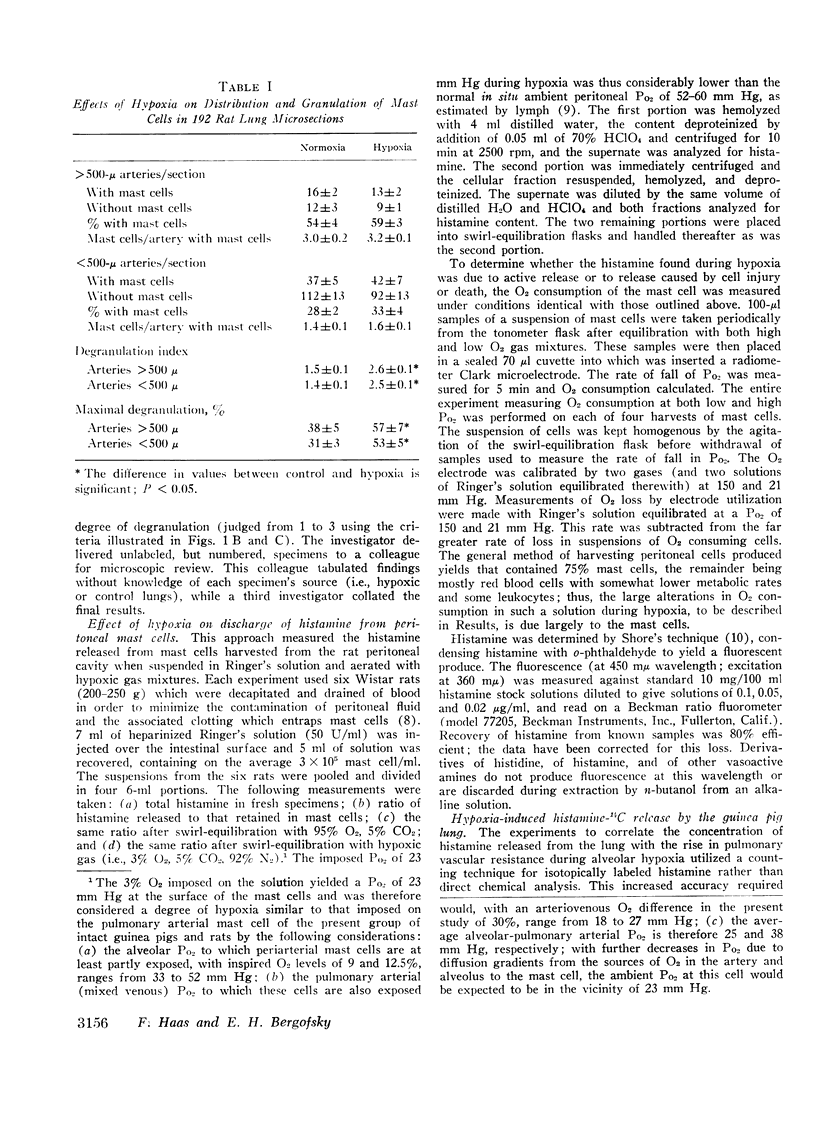

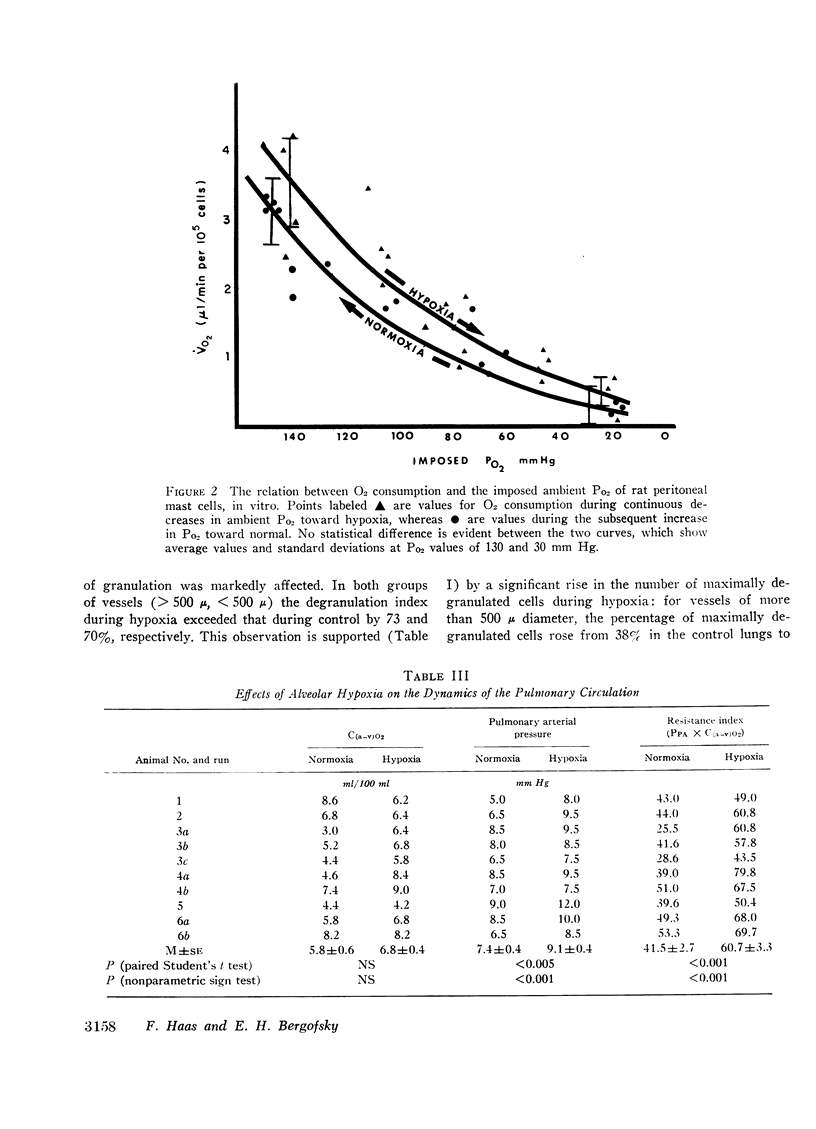

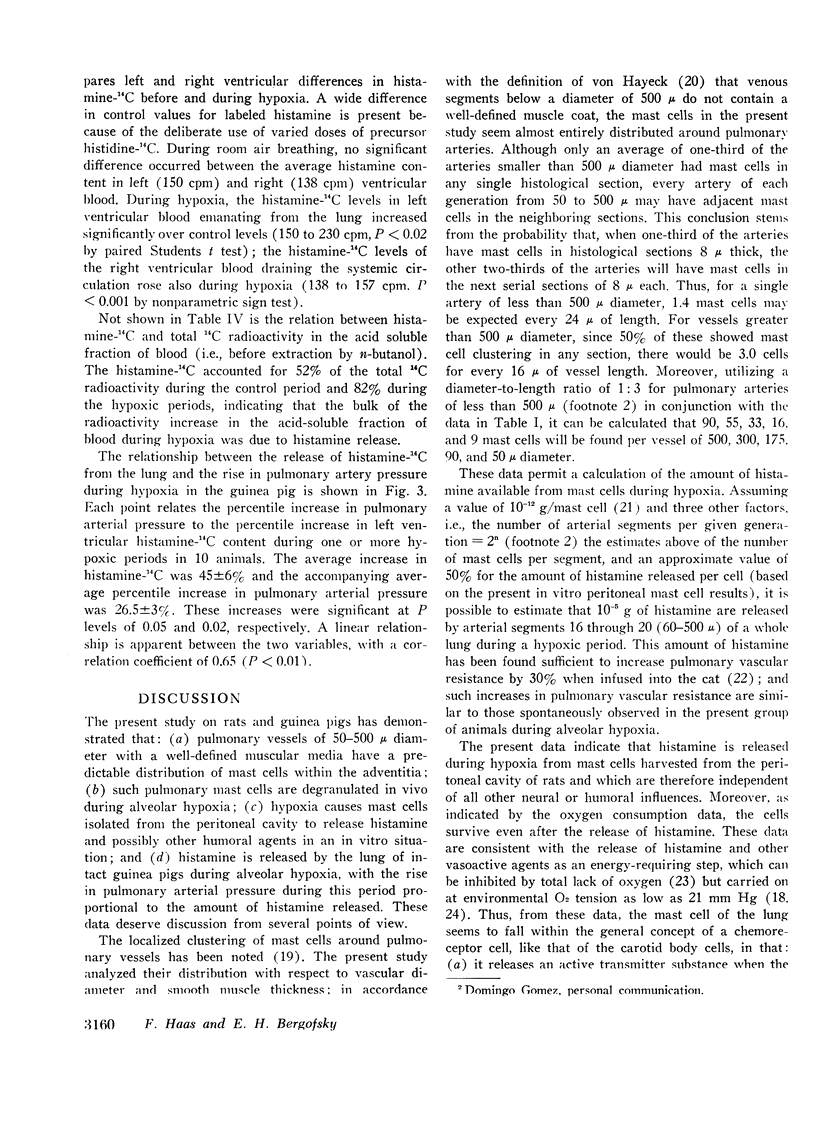


Images in this article
Selected References
These references are in PubMed. This may not be the complete list of references from this article.
- Aviado D. M., Samanék M., Folle L. E. Cardiopulmonary effects of tobacco and related substances. I. The release of histamine during inhalation of cigarette smoke and anoxemia in the heart-lung and intact dog preparation. Arch Environ Health. 1966 Jun;12(6):705–711. doi: 10.1080/00039896.1966.10664468. [DOI] [PubMed] [Google Scholar]
- BARTELS H., HARMS H. Sauerstoffdissoziationskurven des Blutes von Säugetieren (Mensch, Kaninchen, Meerschweinchen, Hund, Katze, Schwein, Rind und Schaf. Pflugers Arch. 1959;268(4):334–365. doi: 10.1007/BF00380734. [DOI] [PubMed] [Google Scholar]
- Barer G. R., McCurrie J. R. Pulmonary vasomotor responses in the cat; the effects and interrelationships of drugs, hypoxia and hypercapnia. Q J Exp Physiol Cogn Med Sci. 1969 Apr;54(2):156–172. doi: 10.1113/expphysiol.1969.sp002014. [DOI] [PubMed] [Google Scholar]
- Bergofsky E. H., Haas F., Porcelli R. Determination of the sensitive vascular sites from which hypoxia and hypercapnia elicit rises in pulmonary arterial pressure. Fed Proc. 1968 Nov-Dec;27(6):1420–1425. [PubMed] [Google Scholar]
- Bergofsky E. H., Holtzman S. A study of the mechanisms involved in the pulmonary arterial pressor response to hypoxia. Circ Res. 1967 May;20(5):506–519. doi: 10.1161/01.res.20.5.506. [DOI] [PubMed] [Google Scholar]
- CANNIZZARO C. [The mast cells in the laryngeal and tracheal mucosa of rats exposed to the action of irritating fumes]. Boll Mal Orecch Gola Naso. 1962 Jan-Feb;80:92–102. [PubMed] [Google Scholar]
- COOPER J. A., SCHAYER R. W. Metabolism of C14 histamine in man. J Appl Physiol. 1956 Nov;9(3):481–483. doi: 10.1152/jappl.1956.9.3.481. [DOI] [PubMed] [Google Scholar]
- Ellis H. V., 3rd, Johnson A. R., Moran N. C. Selective release of histamine from rat mast cells by several drugs. J Pharmacol Exp Ther. 1970 Dec;175(3):627–631. [PubMed] [Google Scholar]
- FISHMAN A. P. Respiratory gases in the regulation of the pulmonary circulation. Physiol Rev. 1961 Jan;41:214–280. doi: 10.1152/physrev.1961.41.1.214. [DOI] [PubMed] [Google Scholar]
- GLICK D., BONTING S. L., DENBOER D. Histochemistry XLIV. Use of density gradient for isolation of mast cells. Proc Soc Exp Biol Med. 1956 Jun;92(2):357–359. doi: 10.3181/00379727-92-22476. [DOI] [PubMed] [Google Scholar]
- GRAHAM P., KAHLSON G., ROSENGREN E. HISTAMINE FORMATION IN PHYSICAL EXERCISE, ANOXIA AND UNDER THE INFLUENCE OF ADRENALINE AND RELATED SUBSTANCES. J Physiol. 1964 Aug;172:174–188. doi: 10.1113/jphysiol.1964.sp007411. [DOI] [PMC free article] [PubMed] [Google Scholar]
- Hauge A. Role of histamine in hypoxic pulmonary hypertension in the rat. I. Blockade or potentiation of endogenous amines, kinins, and ATP. Circ Res. 1968 Mar;22(3):371–383. doi: 10.1161/01.res.22.3.371. [DOI] [PubMed] [Google Scholar]
- Hauge A., Staub N. C. Prevention of hypoxic vasoconstriction in cat lung by histamine-releasing agent 48/80. J Appl Physiol. 1969 Jun;26(6):693–699. doi: 10.1152/jappl.1969.26.6.693. [DOI] [PubMed] [Google Scholar]
- Lloyd T. C., Jr Hypoxic pulmonary vasoconstriction: role of perivascular tissue. J Appl Physiol. 1968 Nov;25(5):560–565. doi: 10.1152/jappl.1968.25.5.560. [DOI] [PubMed] [Google Scholar]
- MOTA I., VUGMAN I. Action of compound 48/80 on the mast cells and histamine content of guinea-pig tissues. Br J Pharmacol Chemother. 1956 Sep;11(3):304–307. doi: 10.1111/j.1476-5381.1956.tb01070.x. [DOI] [PMC free article] [PubMed] [Google Scholar]
- Mongar J. L., Perera B. A. Oxygen consumption during histamine release by antigen and compound 48/80. Immunology. 1965 May;8(5):511–518. [PMC free article] [PubMed] [Google Scholar]
- NAHAS G. G., VISSCHER M. B., HADDY F. J. Discrepancies in cardiac output measurements by two applications of the direct Fick principle. J Appl Physiol. 1953 Nov;6(5):292–296. doi: 10.1152/jappl.1953.6.5.292. [DOI] [PubMed] [Google Scholar]
- Porcelli R. J., Bergofsky E. H. Effect of pH on pulmonary pressor responses to humoral agents. J Appl Physiol. 1971 Nov;31(5):679–685. doi: 10.1152/jappl.1971.31.5.679. [DOI] [PubMed] [Google Scholar]
- SCHAYER R. W. Evidence that induced histamine is an intrinsic regulator of the microcirculatory system. Am J Physiol. 1962 Jan;202:66–72. doi: 10.1152/ajplegacy.1962.202.1.66. [DOI] [PubMed] [Google Scholar]
- SHORE P. A., BURKHALTER A., COHN V. H., Jr A method for the fluorometric assay of histamine in tissues. J Pharmacol Exp Ther. 1959 Nov;127:182–186. [PubMed] [Google Scholar]
- Wintrobe M. M., Shumacker H. B. COMPARISON OF HEMATOPOIESIS IN THE FETUS AND DURING RECOVERY FROM PERNICIOUS ANEMIA: TOGETHER WITH A CONSIDERATION OF THE RELATIONSHIP OF FETAL HEMATOPOIESIS TO MACROCYTIC ANEMIA OF PREGNANCY AND ANEMIA IN INFANTS. J Clin Invest. 1935 Nov;14(6):837–852. doi: 10.1172/JCI100733. [DOI] [PMC free article] [PubMed] [Google Scholar]
- Witte C. L., Clauss R. H., Dumont A. E. Respiratory gas tensions of thoracic duct lymph: an index of gas exchange in splanchnic tissues. Ann Surg. 1967 Aug;166(2):254–262. doi: 10.1097/00000658-196708000-00013. [DOI] [PMC free article] [PubMed] [Google Scholar]



